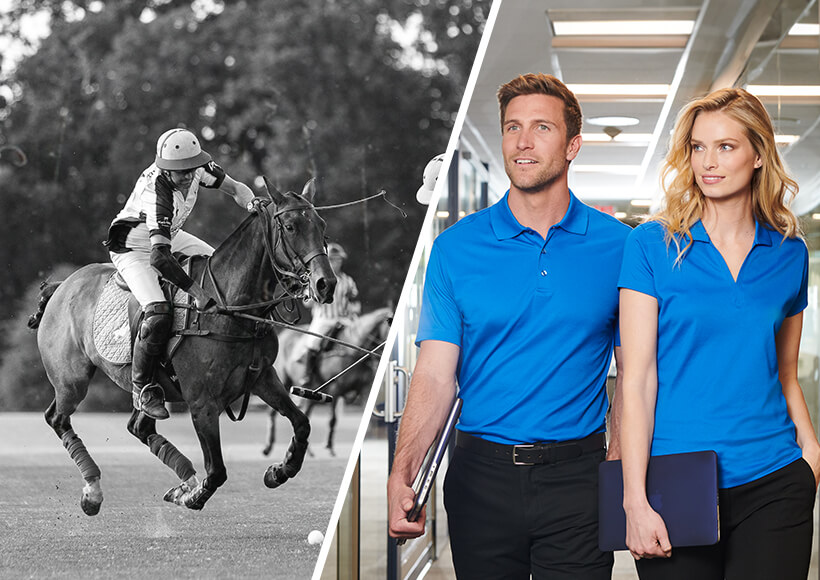
Most Americans likely have at least one polo shirts in their closets. The comfortable, sporty top established its presence across various athletic fashion styles before making its way into mainstream fashion. It’s worn by celebrities, working professionals and casual dressers alike across the globe.
Let’s take a deep dive into the transition of polos from specialty sportswear into a beloved classic.
Table of Contents
Born on the Field
Polo shirts first emerged as athletic gear for tennis and polo players in the late 1800s. The breathable knitted cotton made sweat a concern no more for the athletes and withstood competition. Early polos featured ribbed collars to protect necks from the sun.
By the 1920s, polos became popular for baseball, golf, and sailing. Colleges also adopted the shirts for school sports teams owing to their casual, leisurely vibe.
Ralph Lauren’s Preppy Polo
In 1972, Ralph Lauren introduced his iconic polo pony logo, cementing the shirts as preppy attire. Lauren used quality fabrics, tailored fits, and essential hues like navy, white, and gray.
He replaced the sports heritage of polos with a country club feel through creative marketing that showed Ivy League students, country club members and weekend sailors wearing polos. Lauren made the polo synonymous with Americana style. They were at the center of ‘80s and ‘90s country club fashion.
Going Mainstream
By the late 20th century, the exclusivity of polos as a country club staple started changing. They became affordable and moved from country clubs to malls, and soon entered mass fashion. Brands like Tommy Hilfiger, Lacoste and Nike sold a range of polos in diverse colors and patterns at reasonable prices.
As the business casual trend gained traction, polos became an office-friendly swap for button-ups. Seeing celebs wear polos further increased their popularity, encouraging retail apparel stores to come up with more innovative polo styles. Bulk apparel wholesalers noticed the shift and started offering wider distribution of polos. They soon became a flexible choice for all occasions.
Polos eventually expanded beyond cotton, with athletic moisture-wicking versions. Breathable knits like pique cotton, jersey, mesh and athletic now also come with wrinkle resistance. New styles emerged like sleeveless tennis tops, long-sleeved options, and cropped cuts. The classic polo never failed to adapt with changing tastes.
Why All The Love?
So why did Americans fall for the polo? A few reasons:
- Timeless Classic – Polos never go out of style and pair well with nearly anything.
- Universally Flattering – The collar flatters most face shapes. The front two or three button placket slims the torso. Polos look great on men and women of all ages.
- Endlessly Flexible – Polos transition seamlessly from work, weekends, golf courses, a date night, or travel. They work dressed up or down.
- Comfortable & Breathable – The knit pique cotton fabric maintains shape while allowing airflow, making polos suitable for warm climates or layering.
- Carefree Wash & Wear – Polos hold their shape with minimal ironing and resist wrinkles, ideal for busy lifestyles.
- Sporty Cool – Polos retain a laidback athletic vibe whether worn for leisure, golf, sailing, or just everyday activities.
An Essential Top
Polos migrated from exclusive clubs to retailers to become a beloved classic. Their flattering fit, comfort, flexibility, and sporty look make polos a functional fave. Today, wholesale blank polo shirts are available at very cheap prices without any compromise on quality. In addition, customized polos have their fair share of fans, and are even extensively used for brand promotions and uniforms.
Often the primary choice for a corporate casual look, polos instantaneously pull any outfit together transcending class, gender and occupation. Layered or solo, classic or current, the polo shirt earned its spot in wardrobes worldwide.
